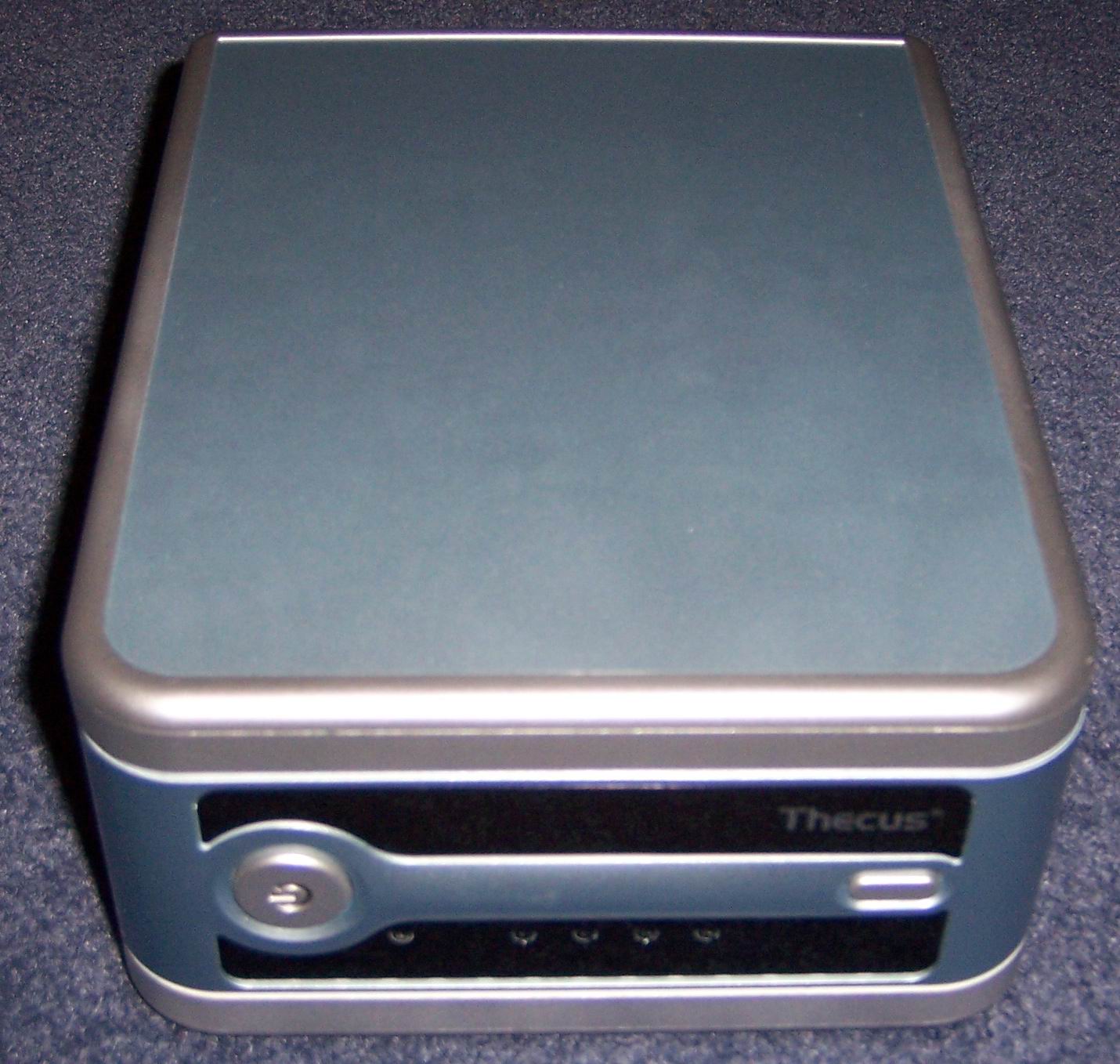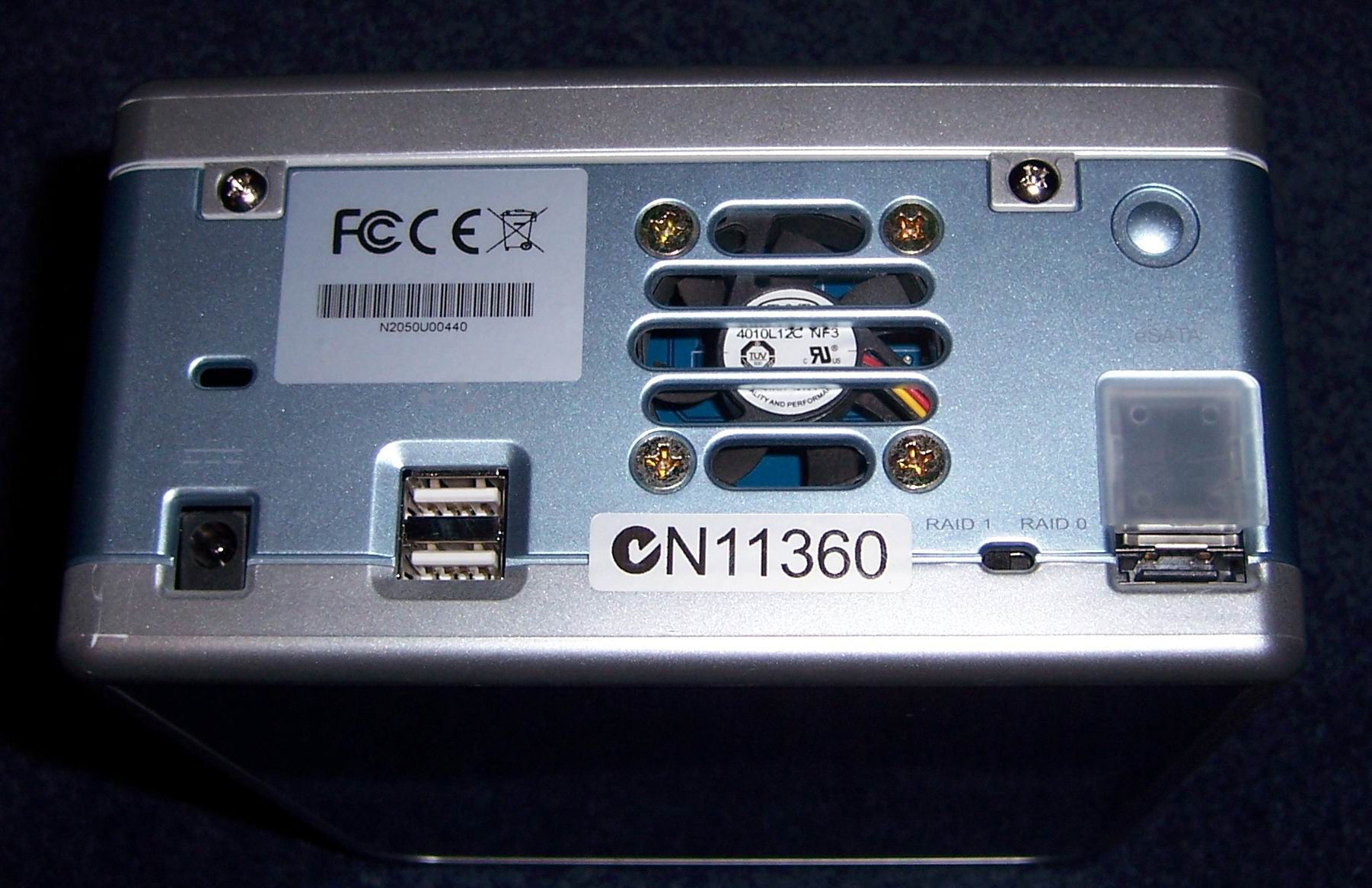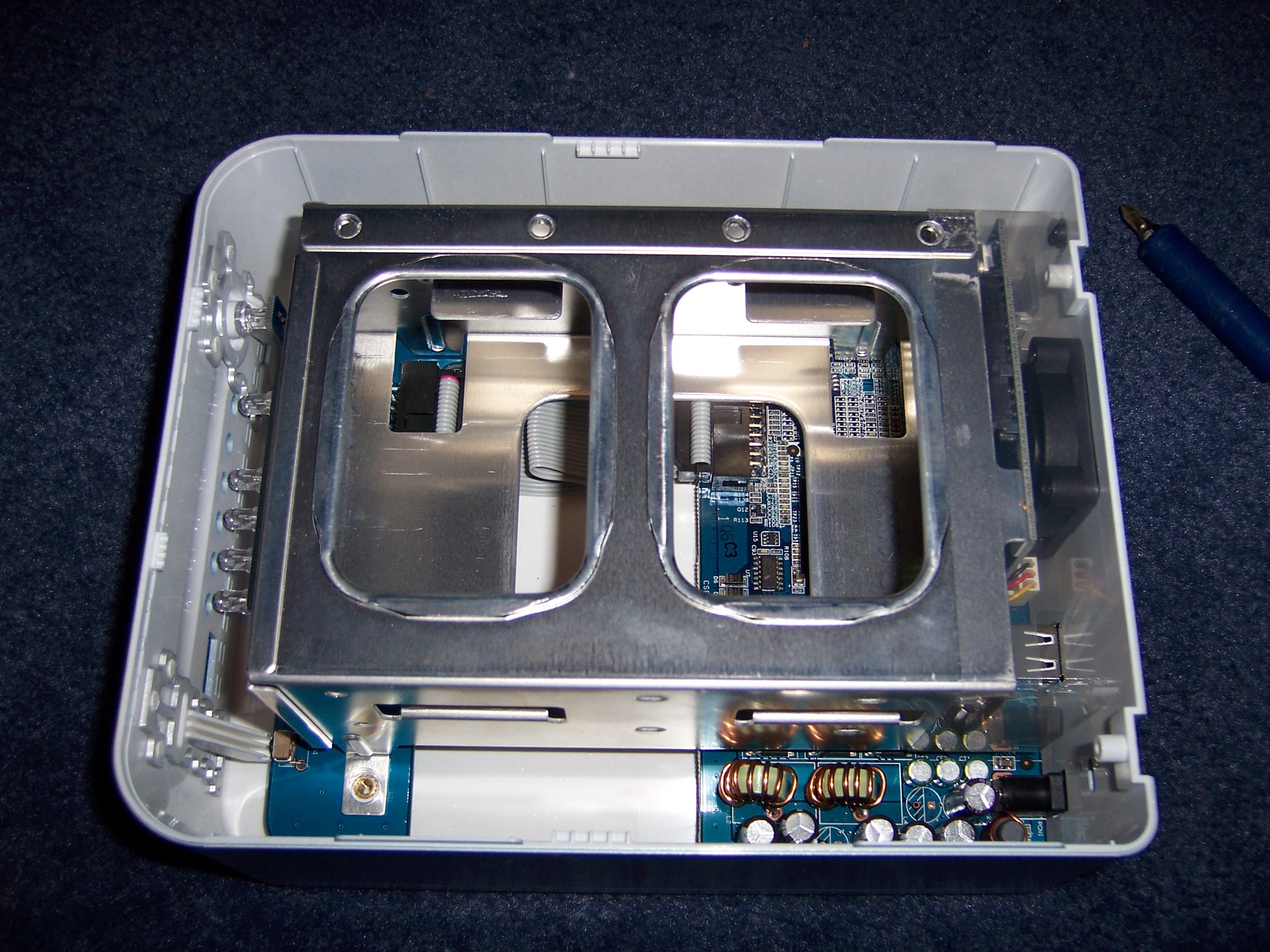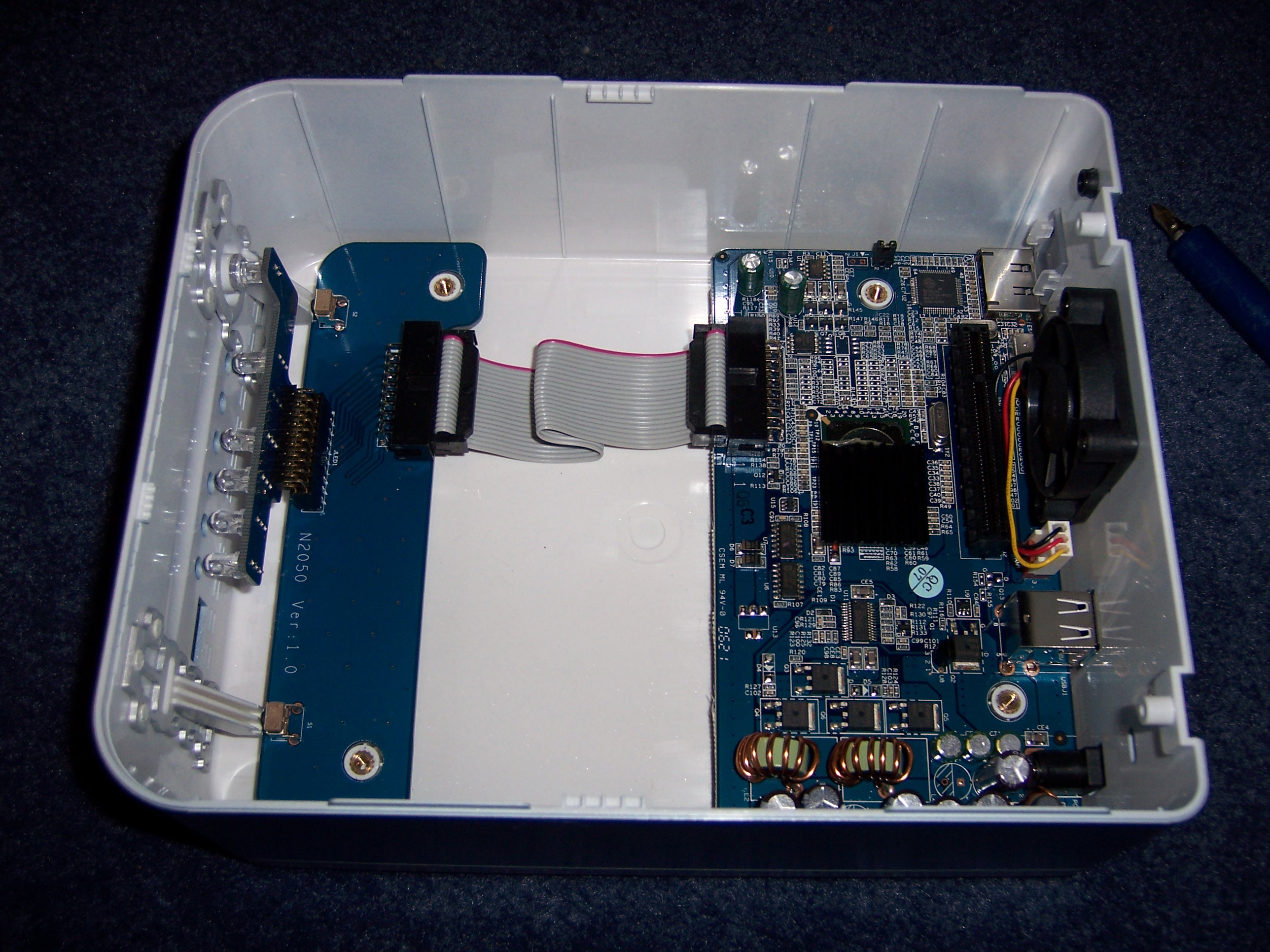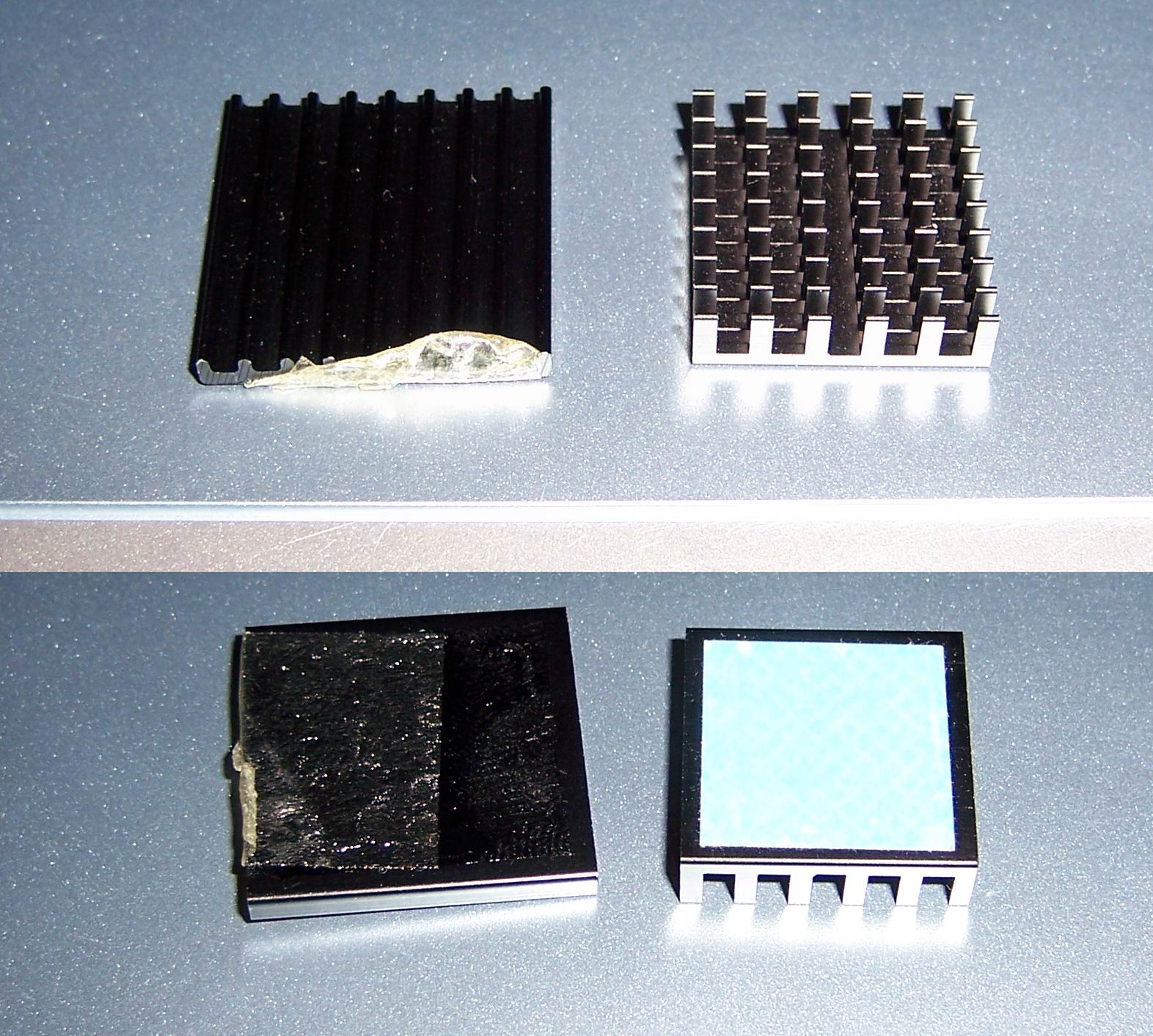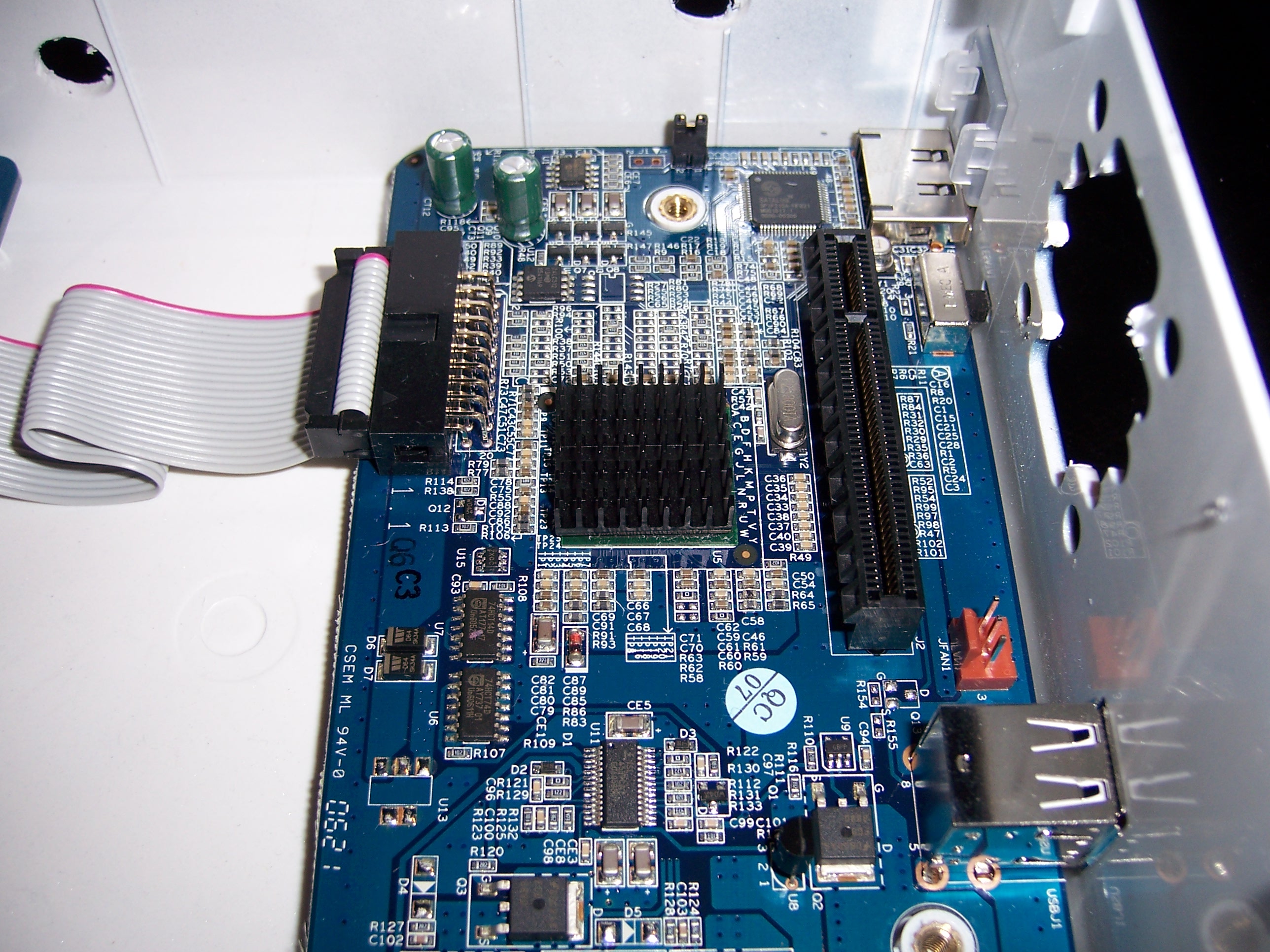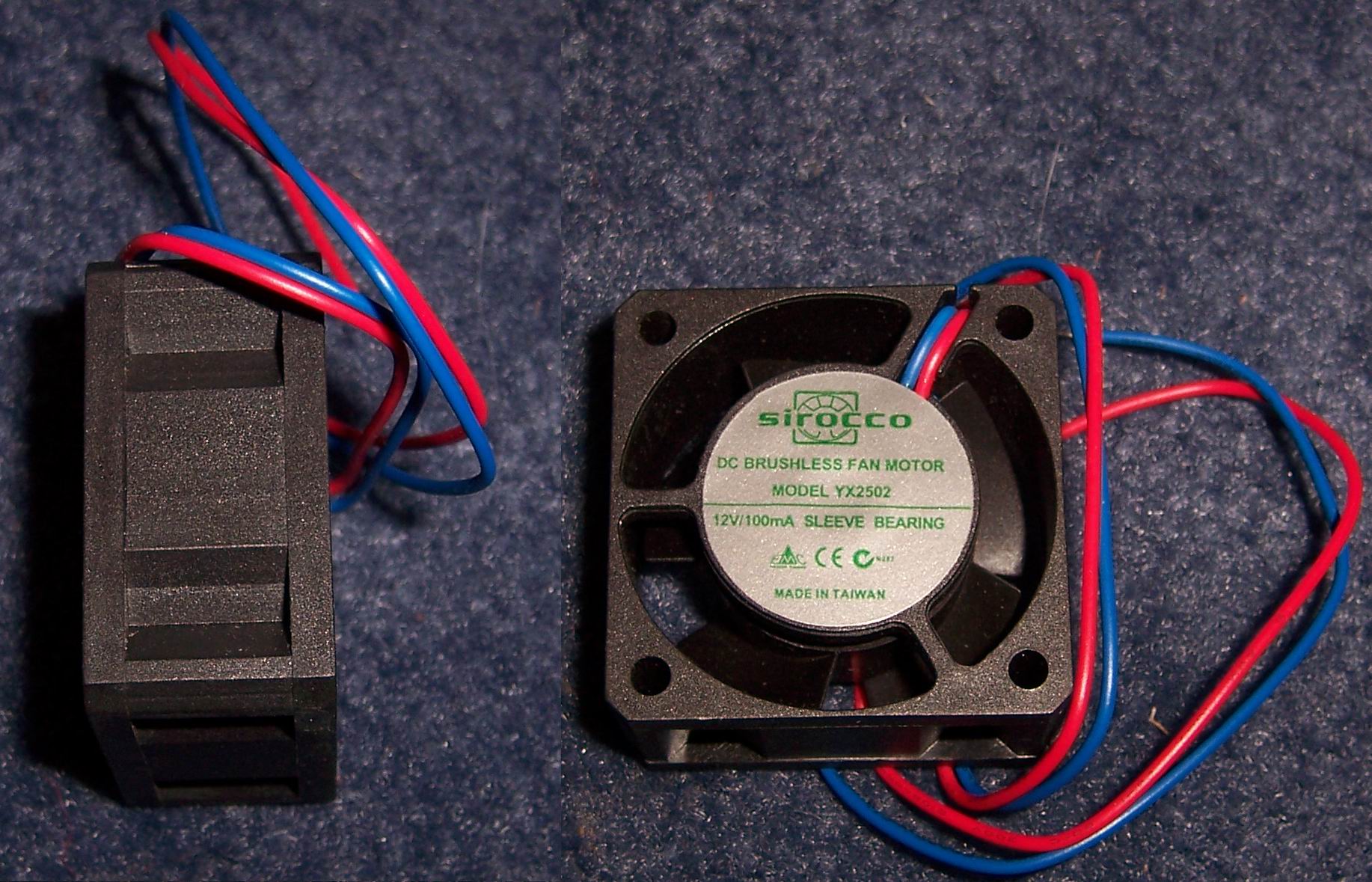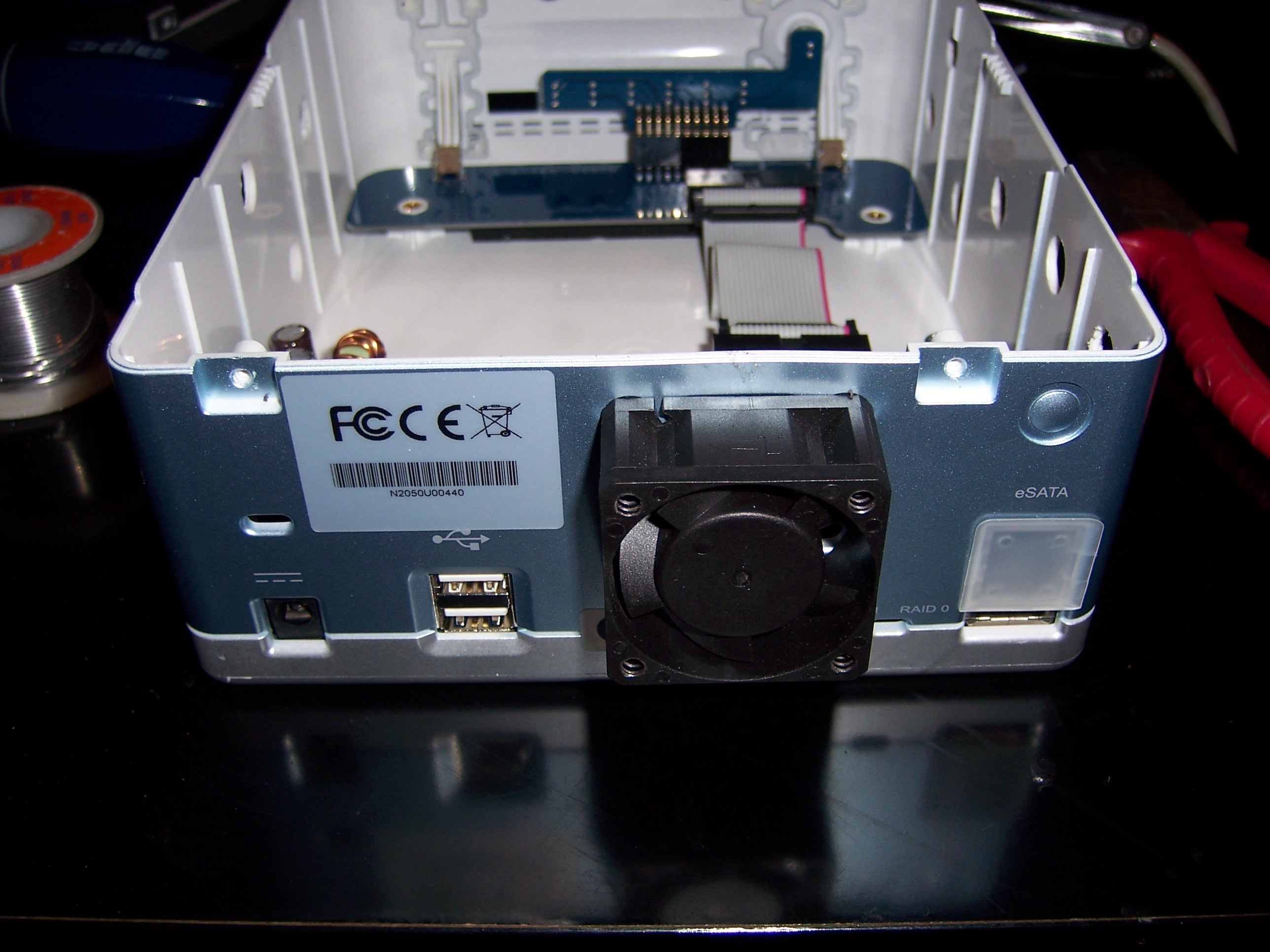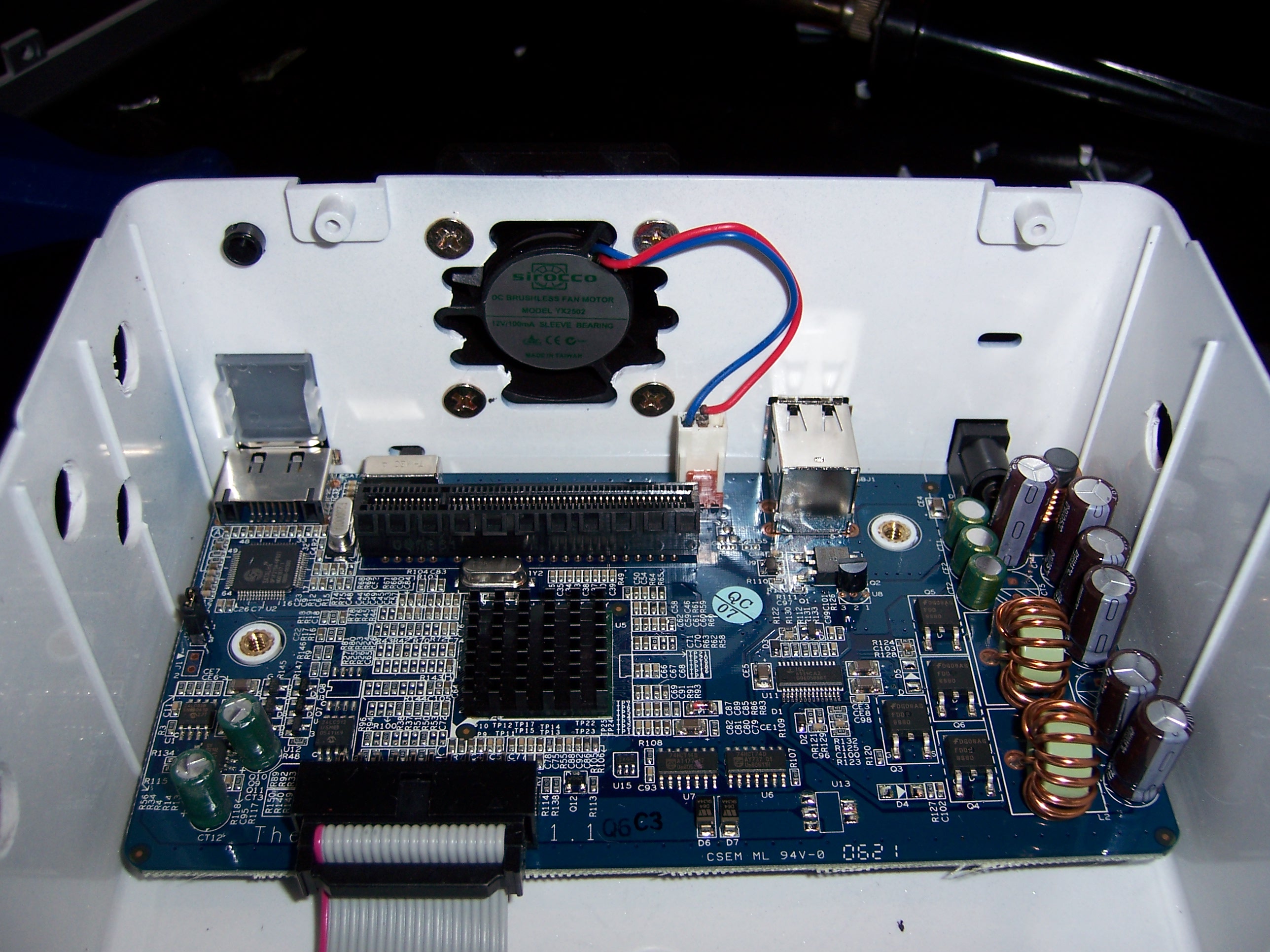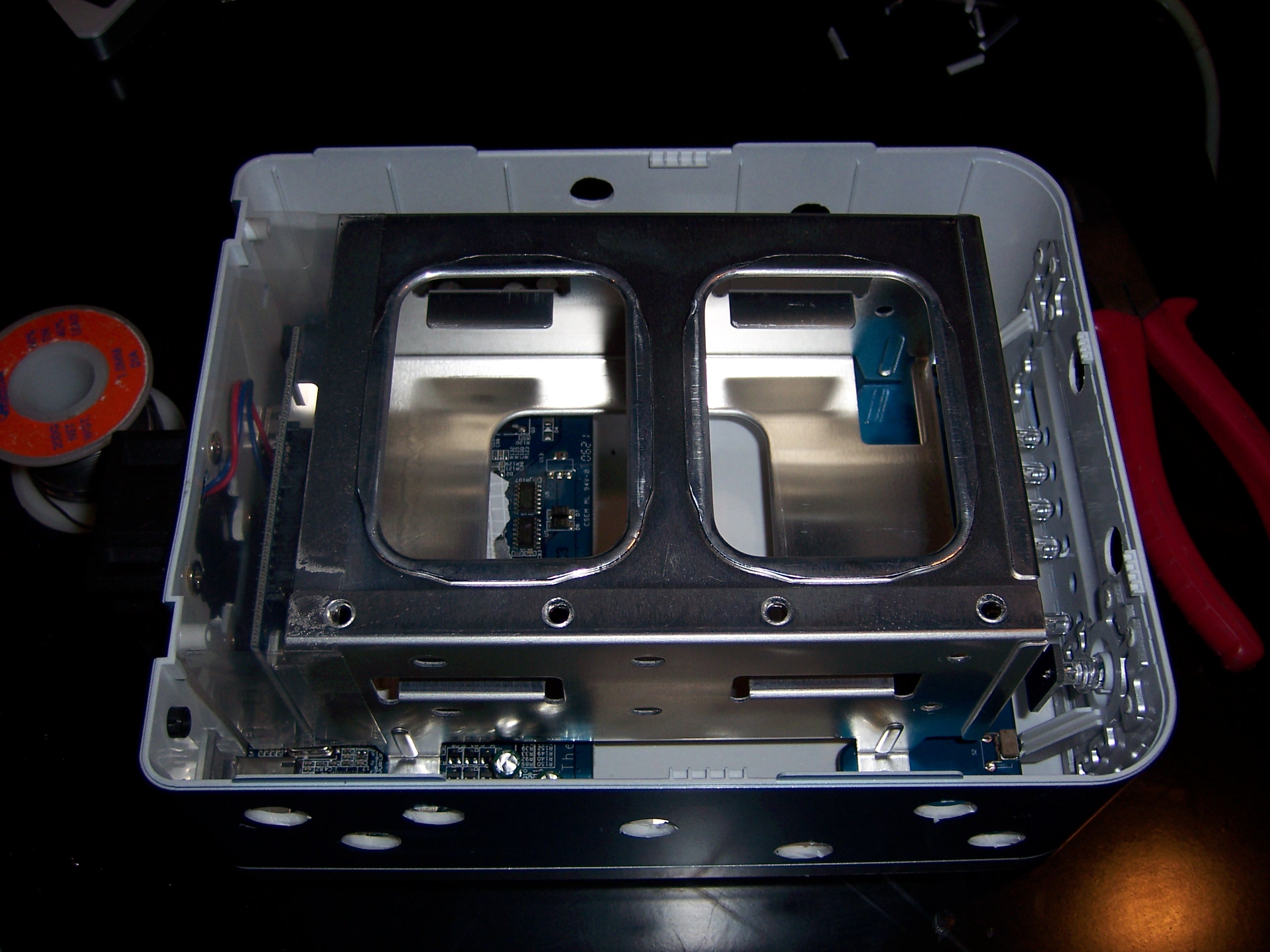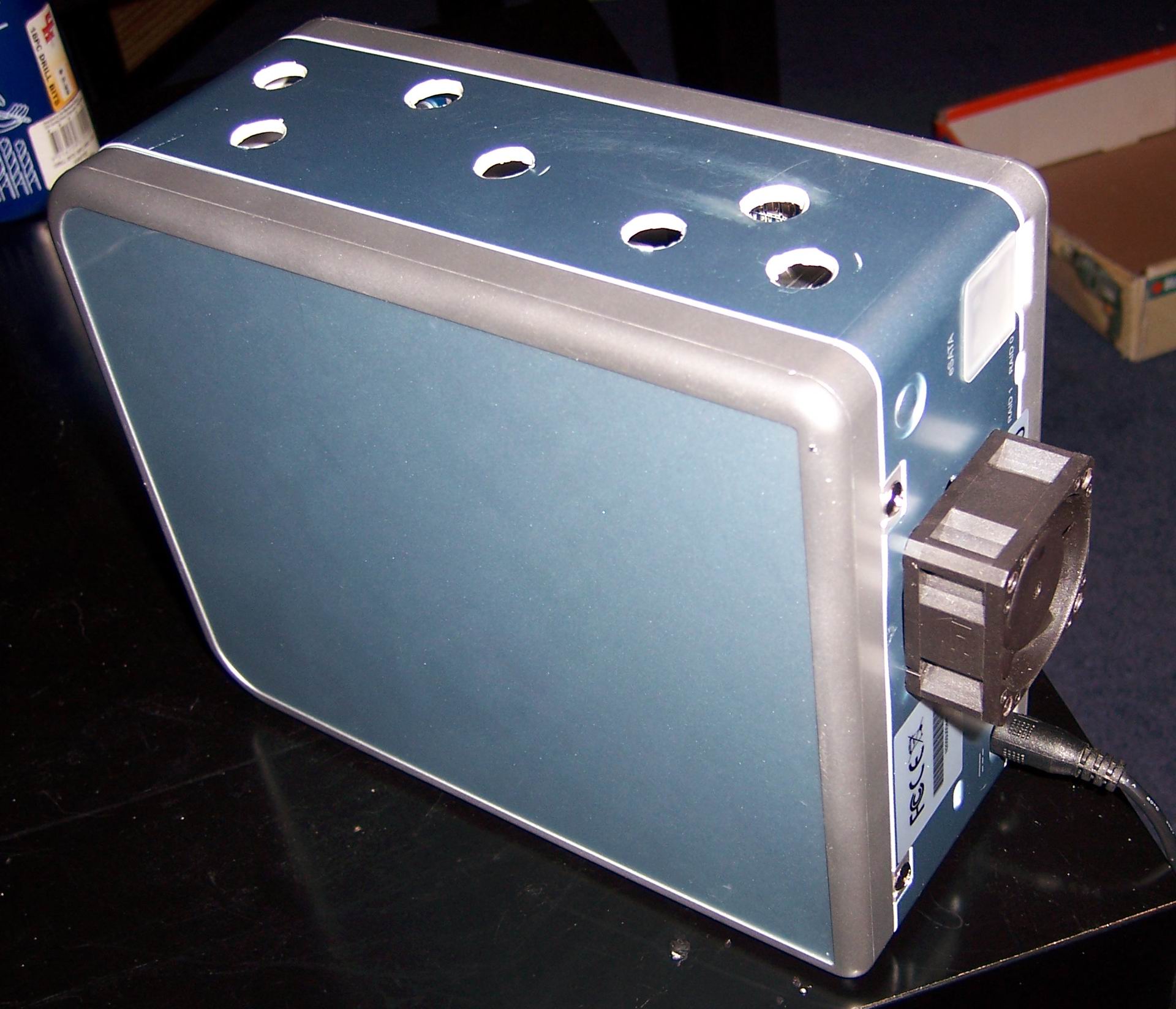Frankenstein's Thecus
We use a Thecus N2050 at work for external backups. The Thecus had been running very well (albeit noisily) in a hosted data-center environment, but has recently been shifted to our local office.
Now, a couple of days ago, the Thecus (as we like to call it) started to have some serious issues - spefically, our Linux kernel was reporting constant IO errors whenever the device was under heavy use. After a quick check, I noticed that the lights on the front were flashing to indicate that the second disk had failed. Since the device was (and still is) running in RAID 1, this should not have affected the device's reliability, but just to sure, I pulled the second disk out.
It was then, upon restarting the Thecus with one less disk, that I noticed the horribly loud fan... and subsequently realised, that the fan could not have been working prior, since it was so obvious now! :(
So then, it was clear that the fan would have to be replaced - and a good thing too, since it was ridiculously loud - I mean, probably around 60 to 70dB... a lot for such a small box. And apparently this box has quite a reputation for over-heating, so I decided to drill some "auxiliary" ventilation ports too ;)
So, here's what the Thecus looked like before I began:
Once we take the lid off, you can see the drive cage that holds up to two SATA disks, and the two PCB's below. Also note how little space the fan has on the right hand side of the photo.
Once the drive cage was removed, I was horrified to see something nasty... can you spot it?
Here's a close-up that should make it obvious :(
The RAID controller (in this case a Silicon Image part) does not have it's heatsink on correctly!!! :( It's literally half off. And the adhesive that holds the heatsink on was set very hard, so its not likely to have "slipped" over time... I would suggest that it was this way from the day it left the factory :(
So, as well as a new fan, I decided to give the Thecus a new heatsink too. In the following picture, the heatsink on the left is the old original, and the heatsink on the right is a HH8580 from Jaycar Electronics... I would have used a HH8582 instead (slightly bigger), but they had none in stock.
The new heatsink is 6mm high, and only just fits - leaves approximately 3mm of clearance to the drive cage, which is perfect if you ask me :) Here's how it looks fitted.
Notice also that I've broken out the finger guards from the fan mount on the right... that's because I decided to get a thicker fan for better performance, rendering the guards useless. Now I could have gotten an XC5054 or YX2503 - at 10mm thick, both would have fit inside the case. But, I decided to go for a YX2502, which at 20mm thick would not fit inside, but would give much better cooling.
It's worth noting here, that the original, and extremely crappy, fan is a T&T 4010L12C NF3.
So anyway, having installed the new fan, and drilled some semi-random auxiliary cooling vents, here's how she looks.
The result is pretty impressive. With the Thecus switched on, and standing up, as in that last photo, you can feel a substantial breeze being forced out the top of the unit :)
Which brings me to another, somewhat interesting, point... the original fan (as pathetic as it was) was configured to suck air out of the box. Which kind of makes sense assuming the box is essentially close to air tight. However, with top (we stand the Thecus on its side) vents, a good convection current should flow, and so arranging the new fan to force air in and through the box seemed more appropriate - so that's what I did :)
And one final note worth mentioning... since I had to remove the old heatsink from the RAID controller, it was possible (though not easy) to tell that the controller is a Silicon Image SiI4723CB. Which, as I had discovered purely by accident previously, can be "monitored" quite nicely over USB under Linux via Silicon Image's SteelVine Manager. So all of the information in my old Stealing from the (Steel)Vine post is relevant for the Thecus N2050 (and probably other Thecus models) too.

